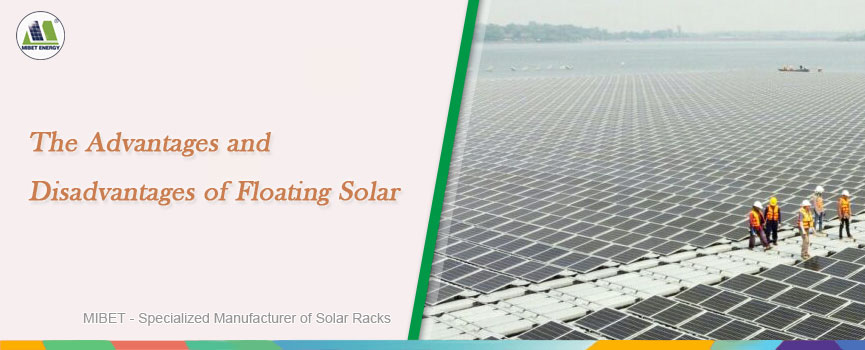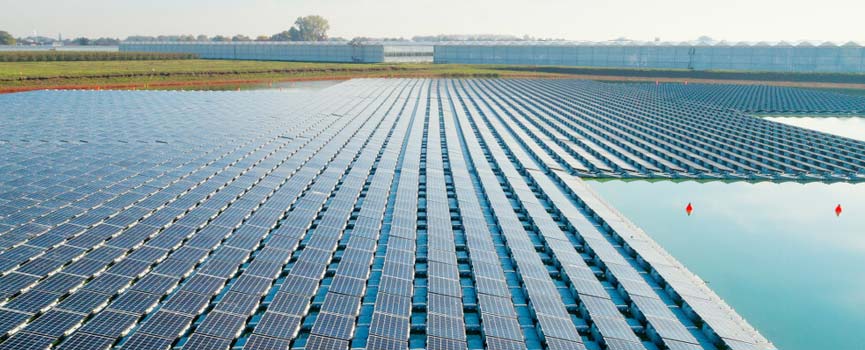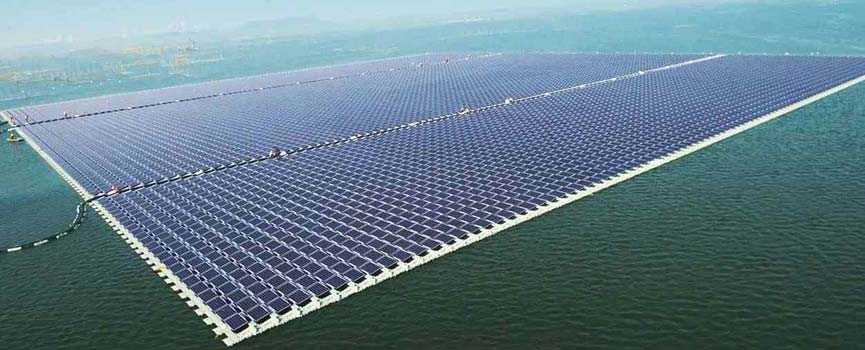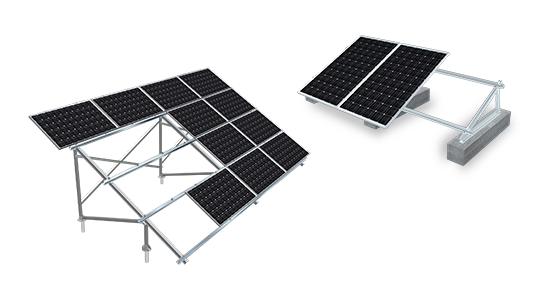The Advantages and Disadvantages of Floating Solar

Floating solar power mirrors ground-mounted and rooftop systems in its electrical principles. Its uniqueness lies in its removable floating structure, allowing for installation in untapped water areas and facilitating large-scale energy generation on diverse water bodies. This blog post will introduce the advantages and disadvantages of floating solar, along with other useful information.
What is Floating Solar?
Floating solar, also called photovoltaics or floating PV systems, denotes a solar array positioned atop a body of water. Solar panels are securely mounted on buoyant structures, allowing them to flow on the water's surface. Typically, these floating solar installations are situated on lakes and dams due to their relatively calm conditions compared to oceans.
Floating solar offers an environmentally benign method of generating electricity, blending marine and renewable energy technologies. The electricity harnessed from these floating arrays is transmitted via underwater cables to a designated transmission tower.
The Key Components
1. Solar Panels: These panels, identical to those used on the ground or rooftops, capture sunlight and convert it into electrical energy. We can use more efficient panels to maximize energy output within a limited space.
2. Floating Platforms: Made from durable, high-density materials like HDPE (high-density polyethylene), these floating platforms ensure that the solar panels remain afloat on the water surface. Additionally, aluminum frames can be added to the floaters to enhance stability and provide a robust mounting structure for the solar panels.
3. Mooring Systems: An anchoring system is employed to steadfastly secure the floating platforms, averting any drifting instigated by wind or water currents, thereby guaranteeing the stability and precise positioning of the solar arrays upon the water body. Mooring lines can be made from materials like synthetic fiber, steel wire, or chain, depending on the depth and nature of the water body.
4. Inverters: The DC electricity engendered by the solar panels necessitates conversion into alternating current (AC) to facilitate utilization in electrical systems. Inverters execute this pivotal conversion, ensuring optimized electricity output for use by electric grids or on-site facilities.
5. Electrical Cabling: Special waterproof cables, along with durable connectors, are used to manage the electrical connections within the system. These cables interconnect the solar panels and transmit the generated electricity to the inverters and grid connection points on land, ensuring safe and efficient energy transfer.
Advantages of Floating Solar

1. Space Efficiency
Floating solar panels are a testament to innovative space utilization, especially in regions where land availability is constrained or cost-prohibitive. Floating solar installations alleviate the need to repurpose fertile agricultural land or clear natural landscapes for solar farms by capitalizing on underutilized water bodies such as reservoirs, dams, and lakes. This is a significant advantage, as it allows for solar energy generation without sacrificing valuable land resources, thus promoting a harmonious co-existence with other land use priorities.
2. Enhanced Efficiency
The symbiotic relationship between water and solar panels in floating PV systems leads to enhanced solar efficiency. Water's natural cooling effect helps to maintain lower operational temperatures for the solar panels, mitigating the common overheating issue associated with land-based solar installations. This thermoregulatory advantage can potentially boost the efficiency of solar panels by up to 15%, translating to higher energy output and, consequently, better return on investment.
3. Albedo Effect
Water bodies possess inherent reflective properties that contribute to the albedo effect, which in turn amplifies the efficiency of floating solar panels. The reflection of sunlight off the water's surface back onto the solar panels increases the amount of photons that can be converted into electricity. This mutually beneficial interaction augments the overall energy yield, making floating solar systems an attractive proposition for optimizing solar energy generation.
4. Water Conservation
Floating solar panels contribute to water conservation by reducing evaporation from the water bodies they occupy. Particularly in arid and semi-arid regions where water scarcity is a pressing concern, the shading effect of floating solar arrays can significantly curb water evaporation, preserving vital water resources. Moreover, by inhibiting sunlight penetration, these installations help control the growth of harmful algae, thus contributing to better water quality.
5. Reduced Installation Costs
The financial requisites of floating solar installations can be less demanding compared to their land-based counterparts. They bypass the need for land acquisition and extensive site preparation, which often entail significant expenses. Furthermore, the proximity to the existing electrical infrastructure of nearby hydroelectric plants or water treatment facilities can lead to cost savings in integration and transmission infrastructure.
6. Low Impact on Aquatic Life
Preliminary studies hint at the lower impact of floating solar installations on aquatic life compared to other over-water or in-water structures. The design and positioning of floating solar panels can be managed to ensure minimal interference with aquatic habitats, thereby fostering a benign coexistence with the aquatic ecosystem.
7. Supportive Policies
Numerous nations actively promote floating solar by offering incentives for renewable energy production. These favorable policies, along with decreasing costs for floating photovoltaic systems, underpin significant industry growth projections.
8. Scalability and Flexibility
You can start small with floating solar and expand as needed. The modular nature of floating platforms makes it easy to adjust and expand the system to accommodate different site dimensions and configurations.
Disadvantages of Floating Solar

1. Increased Initial Investment
Floating solar systems, with their platforms, anchors, and cables, present more complexity and higher upfront costs compared to traditional ground-mounted systems. However, some cost analyses indicate that, over their lifespan, floating systems may incur costs comparable to, or only slightly higher than, ground systems when you factor in the efficiency improvements that can offset the initial outlay.
2. Unproven Durability
Floating solar has demonstrated reliable operation for more than ten years in pilot projects. However, their long-term durability has yet to be fully established. It is necessary to gather more data on how these systems withstand decades of exposure, including factors like weather-induced wear, performance degradation over time, and the impact of ongoing maintenance throughout their operational life.
3. Limited Application
This technology isn't universally applicable. Many floating solar projects are large in scale and provide power to large commercial or utility companies. For individuals or entities desiring solar energy, opting for rooftop or ground-mounted solar systems is a more practical alternative.
Floating Solar Applications
In regions with plenty of open land, you might find reluctance to embrace ground-based solar projects. This hesitance stems from the fear that installing solar panels could limit the land's use for agriculture, construction, or even preserving its natural state. Additionally, the idea of a solar farm cropping up near homes can spark disputes among local residents.
You'll find that most floating solar farms currently occupy man-made water bodies, including reservoirs, wastewater storage ponds, and agricultural irrigation ponds. These facilities are also present in diverse settings such as quarries and mining sites, dams, and areas close to shorelines. Although natural bodies of water present opportunities for solar development, artificial reservoirs offer distinct benefits. These reservoirs generally come with pre-existing infrastructure and access roads, a result of their man-made origins, which facilitates easier and more cost-effective installation and upkeep of floating solar arrays.
Mibet is a leading manufacturer of floating solar systems. Want to learn more about our products? Please click here.


